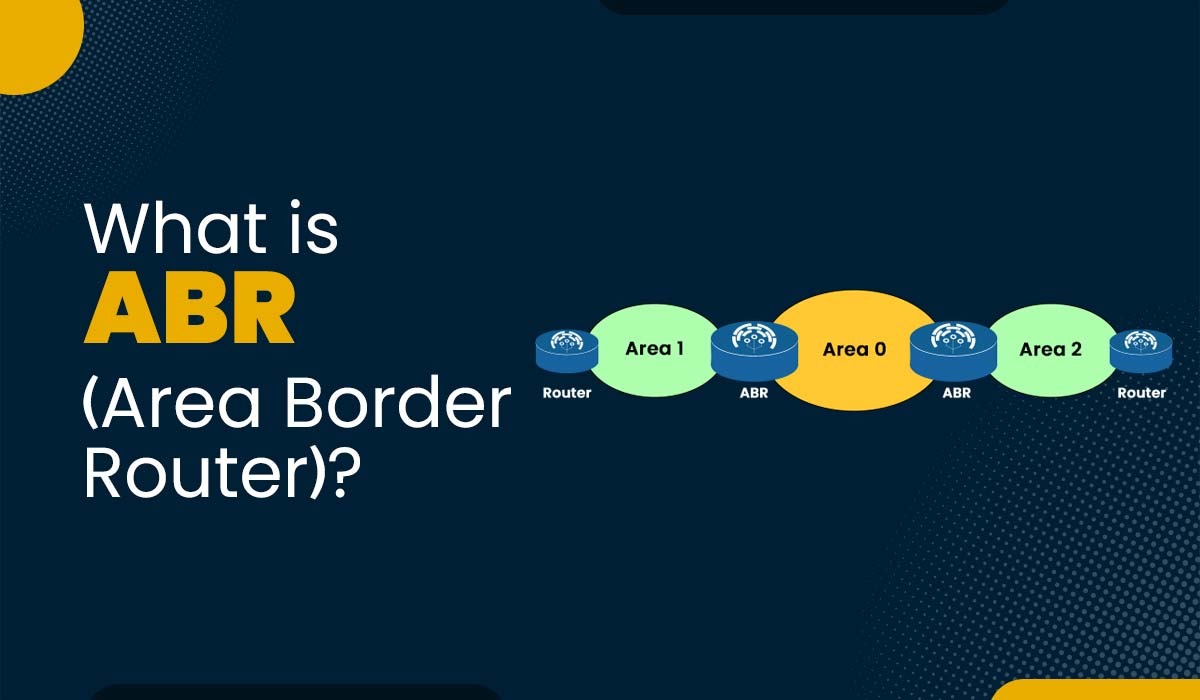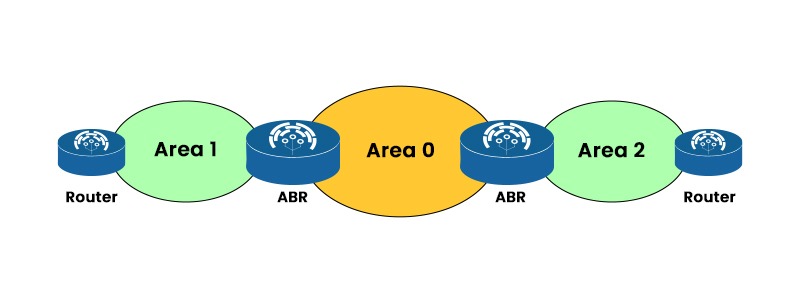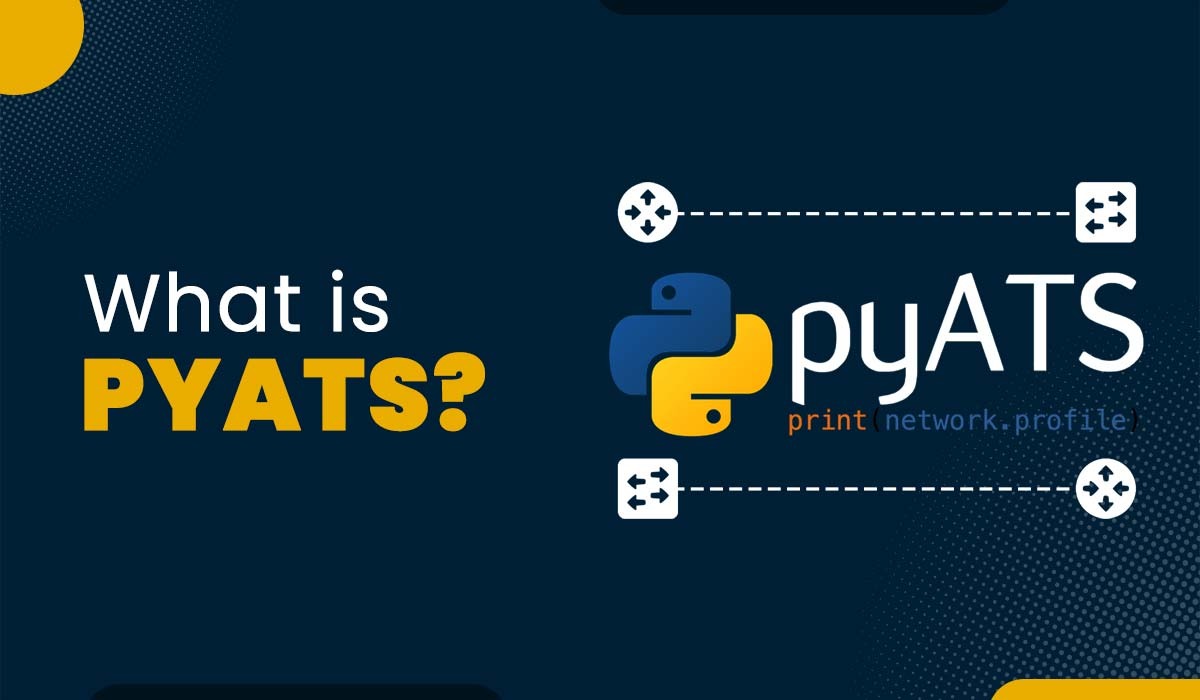What is ABR in OSPF?

OSPF, or Open Shortest Path First, is one of the popular routing protocols that mainly utilizes link-state information in order to calculate the best path for sending the data packets to the receiver end of a network. OSPF functions by dividing an extensive network into smaller areas, and these areas have their own topology and routing information. However, this will create new challenges, such as how one can share routing information between different areas without flooding the routers with too much data. To overcome this problem, ABR or Area Border Router is used. ABR in OSPF is a router used primarily to connect OSPF areas and acts as a gateway between them. In this blog, we will explain what ABR is, its role, working, and its advantages and disadvantages. Before getting into more details about area border router in OSPF, let’s first understand what ABR really is. ABR is a router that has interfaces in more than one OSPF area. It is responsible for summarizing the routing information from one area and advertising it to another area. In this manner, the routers in different areas can find out about the destinations in other areas without storing the detailed topology of the whole network. Let’s understand the ABR in OSPF with the help of an example. Assume we have a network with three OSPF areas: Area 0, Area 1, and Area 2. Area 0 is the backbone area that connects all other areas. Area 1 and Area 2 area have their own subnets and routers. The following diagram explains the way ABRs can connect specific regions: In this example, R1 and R2 are ABRs that connect Area 0 with Area 1 and Area 2, respectively. R1 summarizes the routing information from Area 1 and advertises it to Area 0 as a single route. Similarly, R2 summarizes the routing information from Area 2 and advertises it to Area 0 as a single route. RA and RB are internal routers that belong to one area each. They do not need to know the topology of different areas, only the summary routes provided by the ABRs. Now that we have a better understanding of ABR in OSPF, let’s focus on how it really works. An ABR works by keeping separate LSDBs for each area it belongs to and also exchanging routing information between them. The working of an ABR is discussed below – We have explained the functioning of ABR in OSPF; let’s move on to the advantages and disadvantages of using ABR. It offers various advantages, some of these are: ABR also has some disadvantages, some of these are: These are the advantages and disadvantages related to Area Border Router in OSPF. ASBR, or autonomous system boundary router, is a router that serves as a gateway for the routers that are not part of the OSPF domain or the routers outside the OSPF domain operating on different protocols. ABR, or Area border router, is a router that is mainly used to connect multiple OSPF areas. It builds separate LSDB for each area and also calculates the best path to other areas. ASBR stands for Autonomous System Boundary Router. It is a router that connects an OSPF network to another network using a different protocol. DR and BDR are Designated Router and Backup Designated Router in OSPF. They are elected on multi-access networks to reduce routing overhead and optimize convergence. ABR is a crucial component of OSPF that enables it to scale to large networks by dividing them into smaller areas. However, ABR also introduces some complexity, overhead, and challenges for OSPF networks. Therefore, network administrators should carefully plan and implement their ABRs and their functions to optimize their OSPF networks. In this blog, we have explained what area border router in OSPF and also how it works. We also have discussed the advantages and disadvantages associated with the utilization of ABR. You can checkout OSPF BGP Course to learn more about ABR. If you have any questions or feedback, please leave a comment below. Thanks for reading!Introduction
What is ABR in OSPF?

How does ABR work?
Advantages of Area Border Router
Disadvantages of Area Border Router
Frequently Asked Questions
Q1 – What is an OSPF Asbr?
Q2 – What does ABR mean Cisco?
Q3 – What is ASBR in routing?
Q4 – What is DR and BDR in OSPF?
Conclusion







